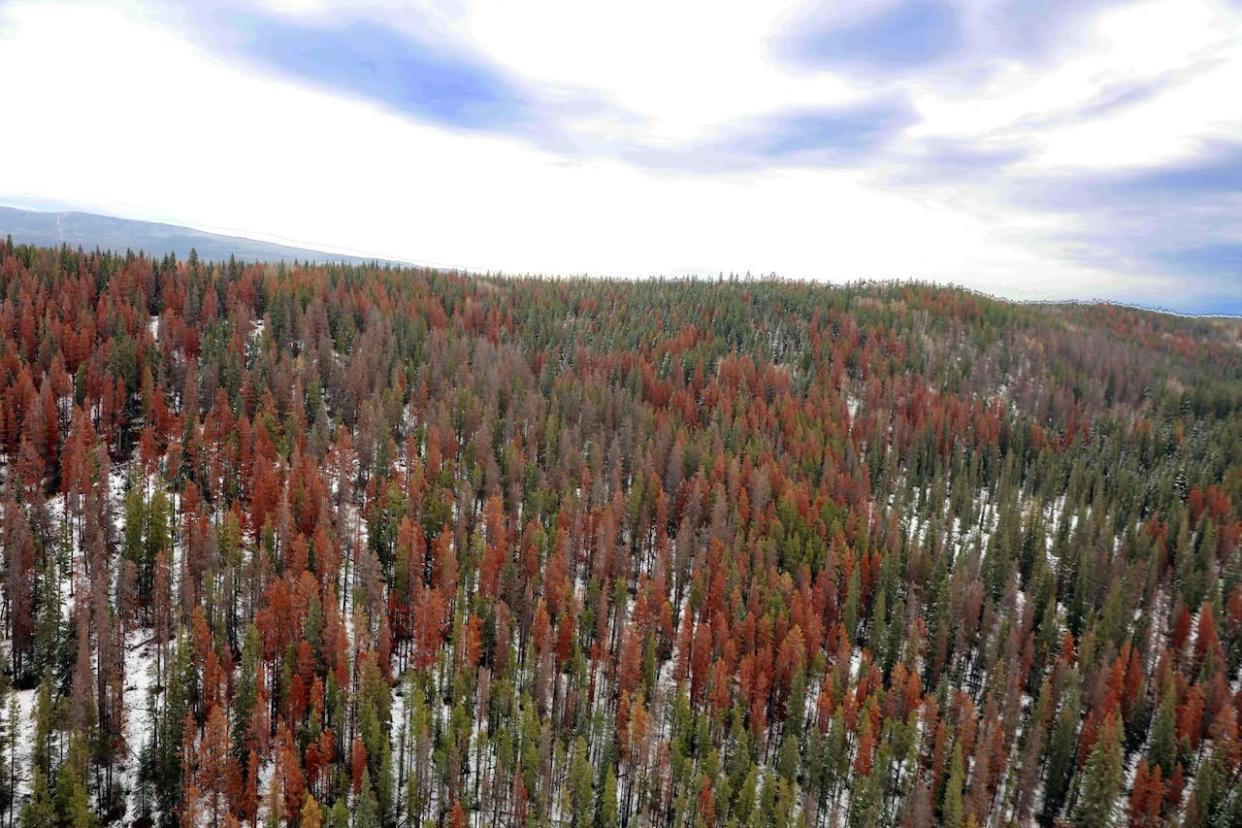Fungal infections in trees can hurt — or help — in the battle against mountain pine beetles

Researchers at the University of Alberta have investigated how fungal pathogens affect the ability of trees to defend against attacks by mountain pine beetles.
"Different fungal pathogens can affect the chemistry of the tree differently," Rashaduz Zaman, lead author of a study published in the journal Microbial Ecology, said in an interview last week.
Zaman, who is pursuing a PhD in forest biology and management, worked with fellow researchers to test the effect of several fungal pathogens on the self-defence ability of lodgepole pine, one of the most abundant coniferous trees in North America.
Lodgepoles make up about 35 per cent of forested land in Alberta and British Columbia.
The aim of the research was to contribute to the development of forest management strategies that take into account the chemical profiles of trees, Zaman said.
The researchers looked at two of the most common fungal pathogens that infect mature lodgepole pine trees in Western Canada — Atropellis canker and western gall rust.
They also looked into how symbiotic fungal pathogens associated with the mountain pine beetle impacted the trees' ability to produce compounds toxic to the beetle.
Fungal pathogens play an important role in the mountain pine beetle establishing itself under the tree's bark, said Jakub Olesinski, a forest health specialist with Parks Canada who wasn't involved with the study.
Beetles build tunnels under the tree's bark, called galleries. When they build egg galleries, "the sapwood of the tree is inoculated with spores of the blue stain fungus," Olesinski said.
He said the fungus prevents the tree from repelling and killing the attacking beetles.
The U of A researchers found that symbiotic pathogens associated with the pine beetle, and western gall rust, weakened the trees' defences by reducing the production of terpenes — compounds that help the tree protect itself against infection and infestation.
Atropellis canker, on the other hand, caused an increase in the production of terpenes toxic to the mountain pine beetle.
But that doesn't mean infecting trees with that pathogen on purpose is a good idea, Zaman said.
"It makes the tree more vulnerable to other diseases, apart from the mountain pine beetle."
Richard Hamelin, a professor in the faculty of forestry at the University of British Columbia — he wasn't involved in the U of A study — said the findings highlight how trees can produce compounds that will help trees to defend against attacks by pests and pathogens.
"That's a great contribution to our understanding of that defence," said Hamelin, who researches diseases in trees.
But, he said, "there's still a long way to apply that to potentially manage outbreaks of pests and diseases."
Beetle can be beneficial
Olesinski said there are ways in which the mountain pine beetle can play a useful ecological role. For instance, it attacks weakened trees and trees seriously affected by drought.
"Usually those are the weakest trees in the ecosystem, and that way it regulates the population of trees. So it's very useful for ecological reasons, and it's one of those regulators of natural balance in the forests."
Healthy trees have natural defences against the pine beetle and other harmful insects, Olesinski said.
"They will start to excrete large amounts of resin that will try to flush the beetle out."

 Yahoo News
Yahoo News 
